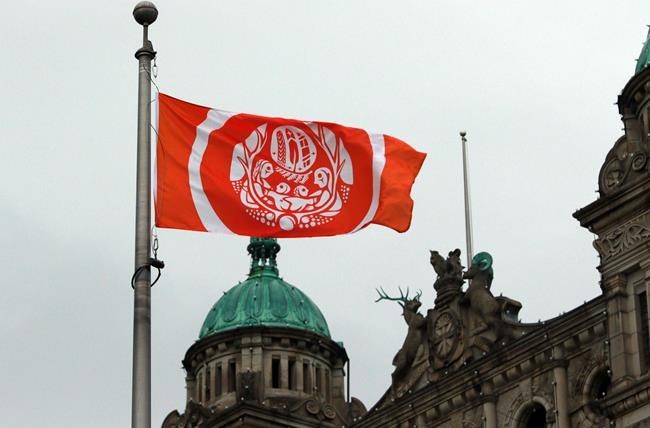MISSION, BRITISH COLUMBIA — An investigation into unmarked graves and missing children by British Columbia’s Sto:lo Nation has revealed at least 158 deaths, most of them at a hospital.
But representatives from the Sto:lo Nation Chiefs’ Council and Stó:lō Research and Resource Management Centre said Thursday that their work has only just begun, and is being hampered by lack of access to information from the federal government and religious institutions that were involved in the schools.
As part of the nation's "Taking Care of Our Children" project, researchers provided Sto:lo members and the media with an update Thursday on archival research, field work involving ground-penetrating radar, and genealogical research into historical sites of three residential schools, cemeteries and a First Nation hospital.
Researchers with the nation said the documents show most of the children reportedly died of diseases such as tuberculosis, with other deaths recorded as accidents, but several causes of death are unknown.
The records pertain to St. Mary’s residential school, the Coqualeetza Industrial Institute and the Coqualeetza hospital, all in the Fraser Valley, and the All Hallows School in Yale, B.C.
Project manager and researcher Amber Kostuchenko said the records came from dozens of archives at 47 different physical locations across the country.
She said they are still gathering information and estimate they have about half of the 70,000 documents they need to account for what happened to their relatives in the institutions.
"Of those 35,000 documents, we have only reviewed a small portion to date," she said. "Even so, we have already found detailed information about children who died."
Of the 158 deaths dating back to the opening of St. Mary's in 1863, 96 occurred at the hospital, most of them from tuberculosis or other diseases.
Lead researcher David Schaepe said interviews with survivors revealed many atrocities committed against children, including sexual assaults, starvation and secret burials.
"What we learned from speaking with only a handful of survivors is devastatingly traumatic and sad," Schaepe said. "We heard cases of children being killed, we heard of the secretive burial of children who died, and the forced burial of children by other children."
Schaepe said survivors described the first site of the St. Mary's school "as a place of punishment and starvation," and its second location as "a place of pedophilia."
"We were told of atrocities," he said.
Chief David Jimmie of the Squiala First Nation said the researchers' work has been hit with unnecessary barriers by the federal government and has not been supported by religious groups involved in running the schools.
Jimmie said the lack of long-term financial support, lack of access to crucial information and the shuffling politicians from key portfolios has hampered the nation's efforts.
Kostuchenko was a researcher with the federal government for 14 years, she said, where a database was created containing a million documents, noting every student and staff member is named in those records. But she said the federal government hasn't given the researchers access.
"Having direct access to the federal database and the information it contains will vastly expedite our research," she said.
Jimmie said that the federal government is now paying Indigenous nations to recreate the work done by federal researchers over many years.
"It makes absolutely no sense," he said.
Jimmie also said cabinet shuffles essentially mean First Nations have to start over after making progress with ministers, who are moved on before any meaningful work can be completed.
"The prime minister needs to demonstrate a true commitment to an understanding of the meaning of reconciliation by directly assuming the relationship with us," he said.
— By Darryl Greer in Vancouver
This report by The Canadian Press was first published Sept. 12, 2023.
The Canadian Press
Note to readers: This is a corrected story. A previous version dropped the letter C in David Schaepe's name in two references.



